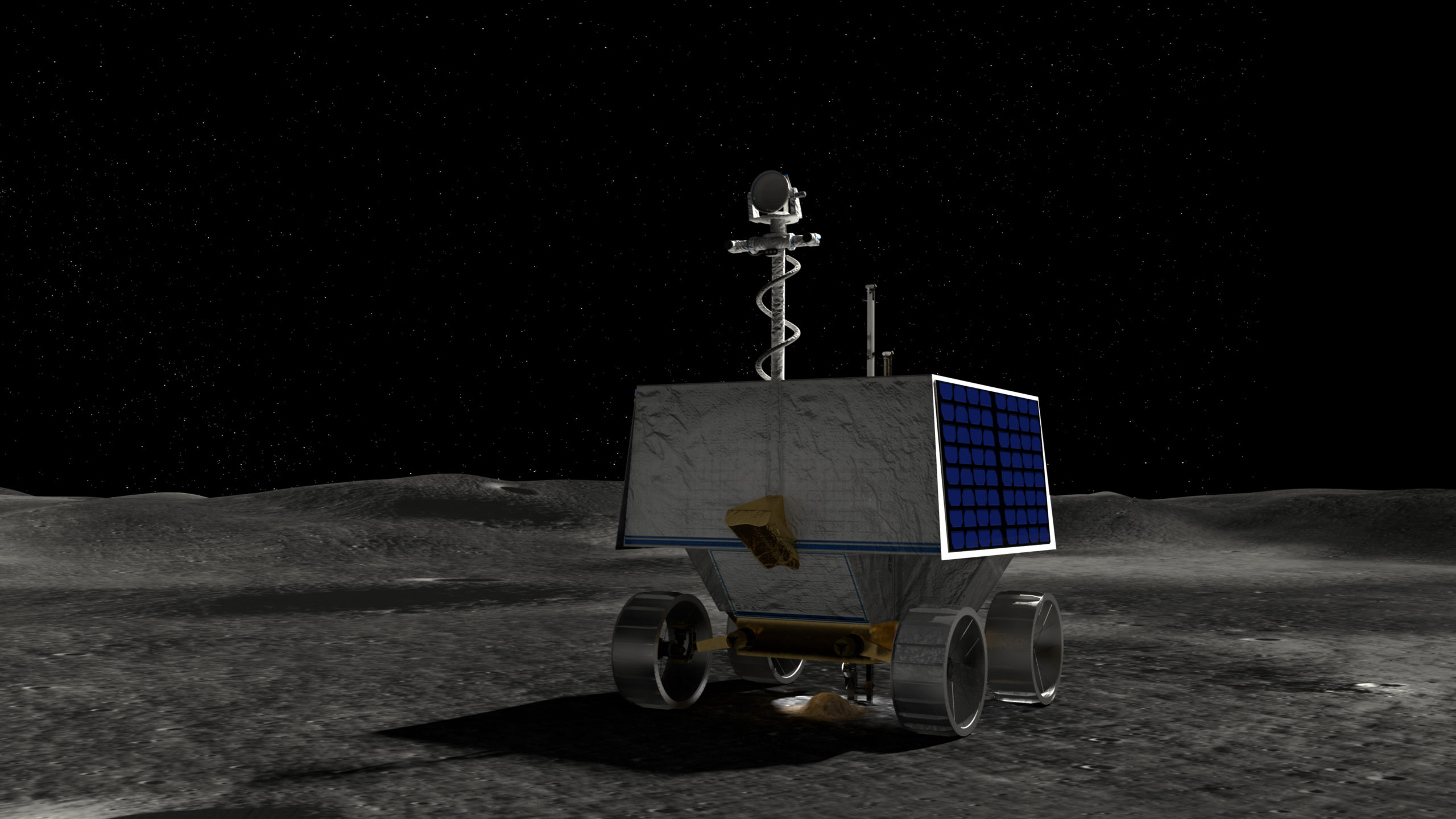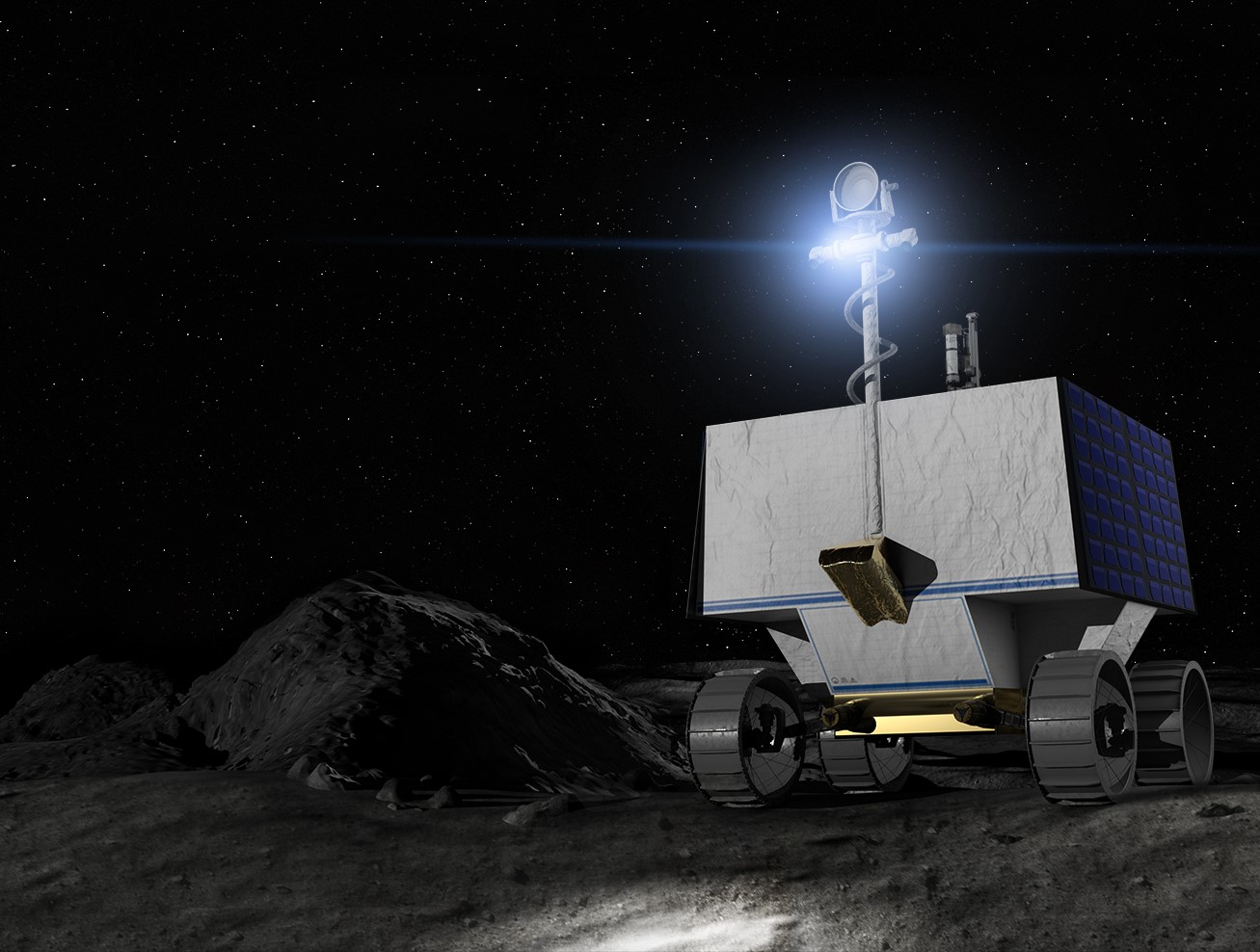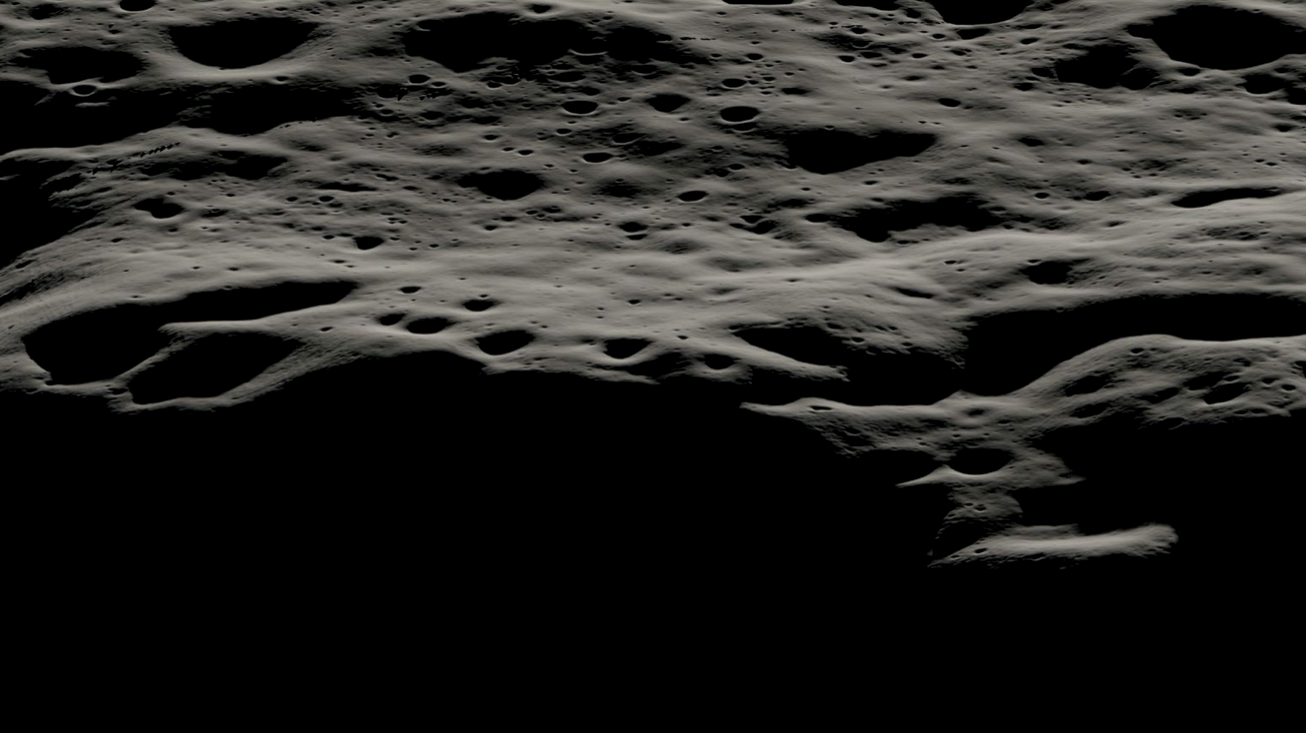
For SpaceUpClose.com & RocketSTEM
CAPE CANAVERAL, FL – NASA has selected the landing site for the agency’s first ever lunar rover named VIPER – the robot is an ice prospecting lunar rover targeted for touchdown on the Moon’s south pole after liftoff in 2023 using a commercial rocket and commercial lunar lander.
VIPER is a mobile robot that will roam around the Moon’s south pole looking for water ice.
The VIPER mission will give NASA surface-level detail of where the water is and how much is available for NASA to use in the Artemis program.
VIPER is launching in support of NASA’s Artemis program to land American astronauts on the Moon in a sustainable series of missions stating no earlier than late 2024.
NASA officials announced that the Volatiles Investigating Polar Exploration Rover (VIPER) lunar rover will land near the western edge of the Nobile Crater at the Moon’s South Pole to map and explore the region’s surface and subsurface for water and other resources that could one day be used for rocket fuel and breathing air by future Artemis astronauts.
“Nobile maximizes science return and flexibility to help ensure mission success once VIPER is on the moon,” said Lori Glaze, planetary science director at NASA Headquarters at a media briefing.
🌒 News: Our robotic VIPER rover will land near the western edge of the Nobile Crater at the Moon’s South Pole. The site has never been explored from the lunar surface. There, it will search for water & resources to support #Artemis missions: https://t.co/fyDAhxKe6k pic.twitter.com/pKNqHWOKkW
— NASA (@NASA) September 20, 2021
The Moon’s South Pole is one of the coldest areas in our solar system and home to permanently shadowed craters that have been heavily impacted by water ice and organic material laden comets that could be deposited there today with minimal chances to evaporate due to the lack of heat and sunlight.
No prior missions to the Moon’s surface have explored it.
The 50-pound (450 kilograms) VIPER rover is solar-powered and the mission duration is targeted for about 100 days.
Scientists have thus far only studied the region using remote sensing instruments, including those on NASA’s Lunar Reconnaissance Orbiter (LRO) and the Lunar Crater Observation and Sensing Satellite (LCROSS).
VIPER is equipped with a trio of spectrometers that will continuously gather measurements of the lunar soil and rock as it traverses across the Nobile region
The robot is also equipped with a driller that can core sample up to 1 meter (3.3 ft) deep for later analysis by the spectrometers in search of water and other volatiles and mineral.
The core sample will be brushed off the drill to a shadowed spot beneath the rover and chemical analysis by the trio of spectrometers, said Anthony Colaprete, VIPER lead project scientist at NASA’s Ames Research Center in Silicon Valley, California, in respone to my question at the media briefing.

“Once on the lunar surface, VIPER will provide ground truth measurements for the presence of water and other resources at the Moon’s South Pole, and the areas surrounding Nobile Crater showed the most promise in this scientific pursuit” said Thomas Zurbuchen, associate administrator for science at NASA Headquarters, in a statement.
“The data VIPER returns will provide lunar scientists around the world with further insight into our Moon’s cosmic origin, evolution, and history, and it will also help inform future Artemis missions to the Moon and beyond by enabling us to better understand the lunar environment in these previously unexplored areas hundreds of thousands of miles away.”
VIPER will launch on a SpaceX Falcon-Heavy rocket for delivery to the Moon by Astrobotic’s Griffin lander under NASA’s Commercial Lunar Payload Services initiative.

“Selecting a landing site for VIPER is an exciting and important decision for all of us,” Daniel Andrews, VIPER project manager, said.
“Years of study have gone into evaluating the polar region VIPER will explore. VIPER is going into uncharted territory—informed by science—to test hypotheses and reveal critical information for future human space exploration.”
Watch this NASA video detailing how VIPER will operate on the moon searching for lunar water ice:
Video Caption: In 2023, NASA’s Volatiles Investigating Polar Exploration Rover, or VIPER, will land near the western edge of the Nobile Crater at the Moon’s South Pole to map and explore the region’s surface and subsurface for water and other resources. Credits: NASA
Watch Ken’s continuing reports about Artemis and NASA missions, SLS, Orion, SpaceX Crew and Cargo Dragons, SpaceX Starlink, Commercial Crew and Starliner and Crew Dragon and onsite for live reporting of upcoming and recent SpaceX and ULA launches including Crew 1 & 2 & 3, ISS, Lucy, Solar Orbiter, Mars 2020 Perseverance and Curiosity rovers, NRO spysats and national security missions and more at the Kennedy Space Center and Cape Canaveral Space Force Station.
Stay tuned here for Ken’s continuing Earth and Planetary science and human spaceflight news: www.kenkremer.com –www.spaceupclose.com – twitter @ken_kremer – email: ken at kenkremer.com
Dr. Kremer is a research scientist and journalist based in the KSC area, active in outreach and interviewed regularly on TV and radio about space topics.
………….
Ken’s photos are for sale and he is available for lectures and outreach events
Please consider supporting Ken’s work by purchasing his photos and/or donating at Patreon:
https://www.patreon.com/kenkremer
x



